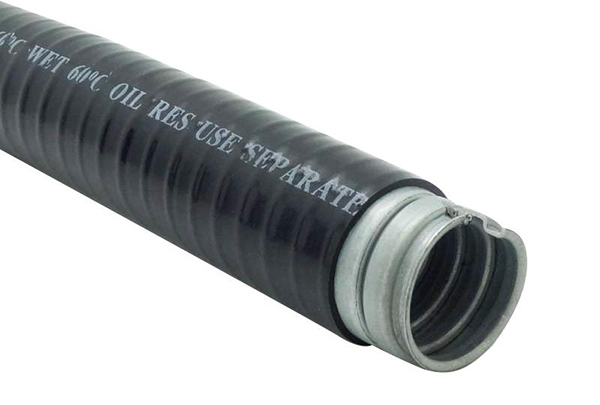Jul. 26, 2023
Connecting liquid tight conduit to an electrical box requires attention to detail and proper technique to ensure that the connection is secure and safe. Liquid tight conduit is a flexible, watertight conduit that is used to protect electrical wiring from exposure to moisture and other environmental hazards. It is commonly used in outdoor and wet environments, as well as in areas where there may be exposure to chemicals or other harsh conditions.

Liquid Tight Flexible Metal Conduit -PNKLTG Series(UL 360)
How to Connect Liquid Tight Conduit to Electrical Box?
Choose the Right Type of Connector
There are several types of connectors that can be used to connect liquid tight conduit to an electrical box. The most common types are compression fittings, liquid tight fittings, and straight connectors. Each type has its advantages and disadvantages, so it is important to choose the right one for your specific application.
Compression fittings are the most common type of connector and are often used when there is limited space in the electrical box. They consist of a compression nut, a compression ring, and a sealing gasket. The compression nut is tightened onto the conduit, compressing the sealing gasket onto the box, creating a watertight seal.
Liquid tight fittings are similar to compression fittings but have a sealing ring that fits over the conduit before it is connected to the box. This provides an extra layer of protection against moisture and other environmental hazards.
Straight connectors are used when the conduit needs to be connected directly to the box without any bends or angles. They are typically the simplest and most affordable option.
Prepare the Conduit
Before connecting the conduit to the electrical box, it is important to prepare the conduit by cutting it to the correct length and removing any burrs or sharp edges. Use a conduit cutter or a hacksaw to cut the conduit to the desired length. After cutting, use a file or sandpaper to remove any rough edges or burrs that could damage the connector or electrical box.
Insert the Connector
After preparing the conduit, insert the connector into the end of the conduit. The connector should fit snugly into the conduit and be positioned at the end of the conduit. For compression fittings and liquid tight fittings, ensure that the sealing gasket or sealing ring is in place on the connector before inserting it into the conduit.
Secure the Connector
Once the connector is inserted into the conduit, it is time to secure it in place. For compression fittings, thread the compression nut onto the connector and tighten it using a wrench. The compression nut should be tightened until it is snug, but not so tight that it damages the connector or conduit.
For liquid tight fittings, position the sealing ring over the connector and then insert the connector and sealing ring into the end of the conduit. Push the connector and sealing ring in until the sealing ring is seated against the end of the conduit. Then, tighten the locking ring onto the connector until it is snug.
For straight connectors, simply insert the connector into the end of the conduit and tighten the locking nut onto the connector until it is snug.
Connect the Conduit to the Electrical Box
After securing the connector in place, it is time to connect the conduit to the electrical box. For compression fittings and liquid tight fittings, simply thread the connector onto the electrical box until it is snug. For straight connectors, insert the connector into the electrical box and tighten the locking nut until it is snug.
Check the Connection
After connecting the conduit to the electrical box, it is important to check the connection to ensure that it is secure and watertight. Check for any signs of damage or looseness in the connection. If the connection is not secure or watertight, it should be tightened or reconnected.
Embrace the cutting-edge technology and unparalleled versatility of Flexible to revolutionize your workflow. Leave behind the constraints of traditional solutions and unlock a world of possibilities. Whether you're a small business aiming to grow or a large corporation seeking to stay ahead, Conduit Flexible adapts to your unique needs, ensuring seamless integration and enhanced productivity.
If you want to know more information about connecting liquid tight conduit, please contact us. We will provide professional answers.

















